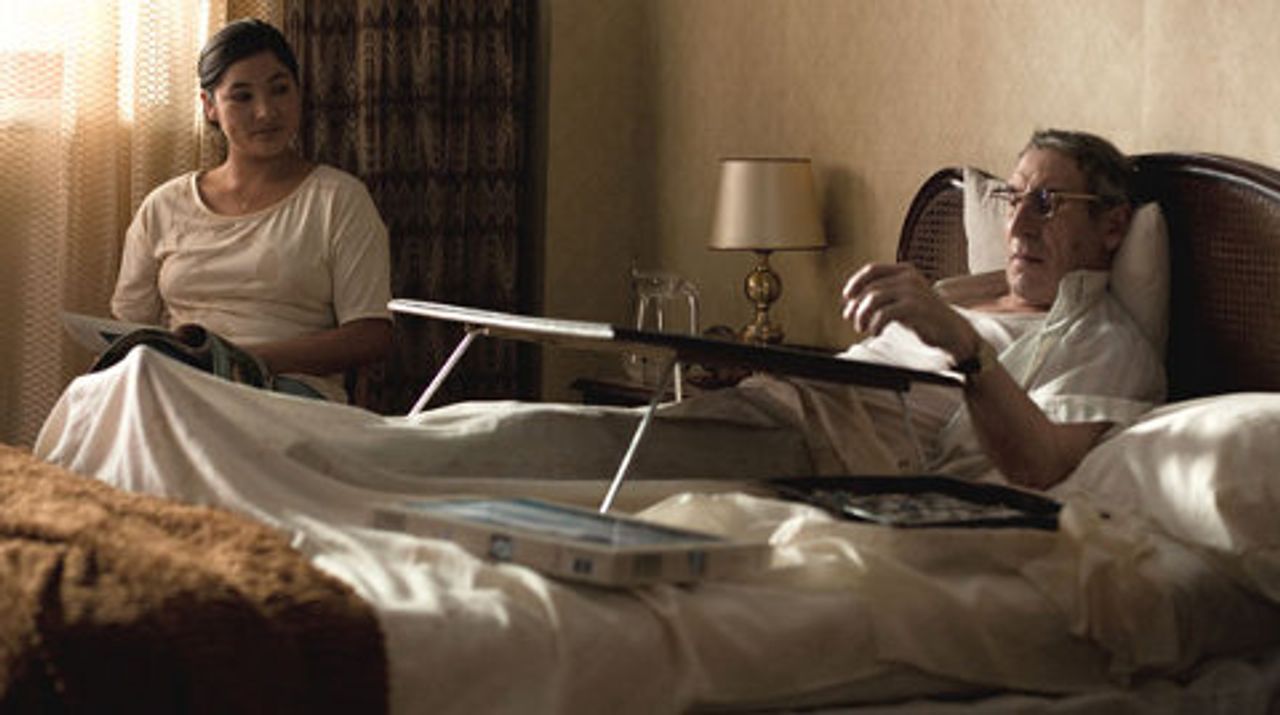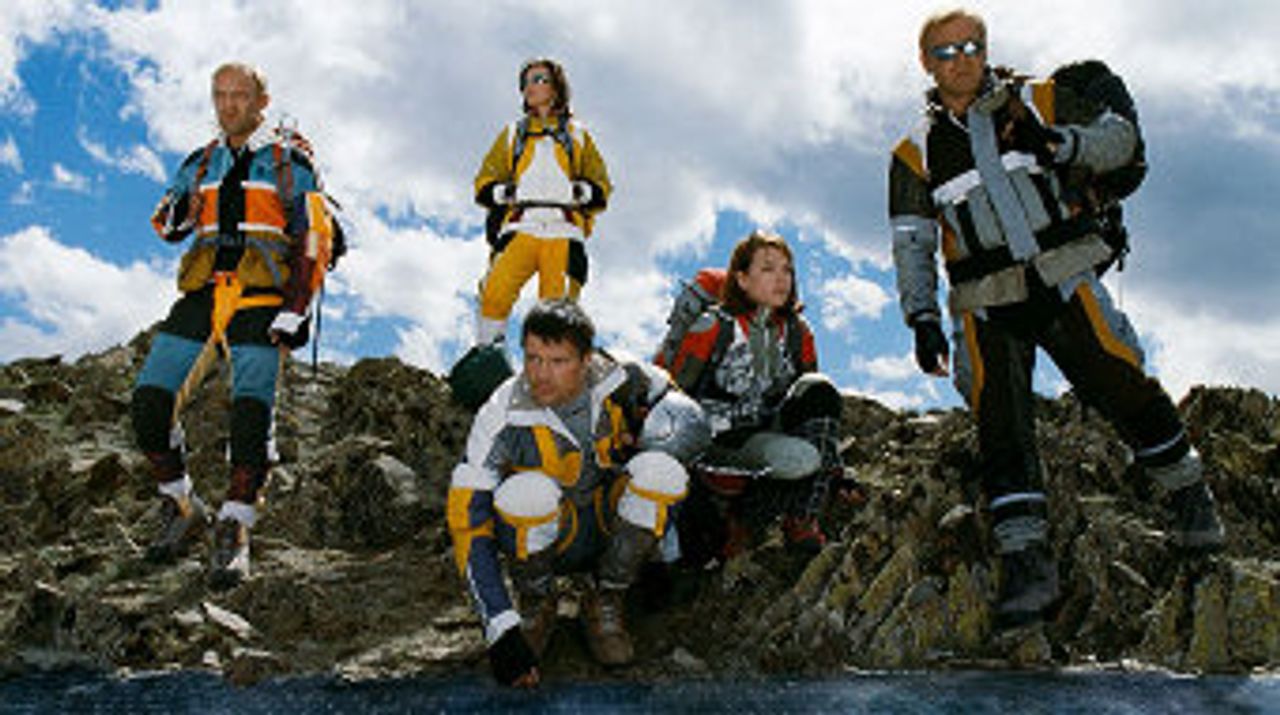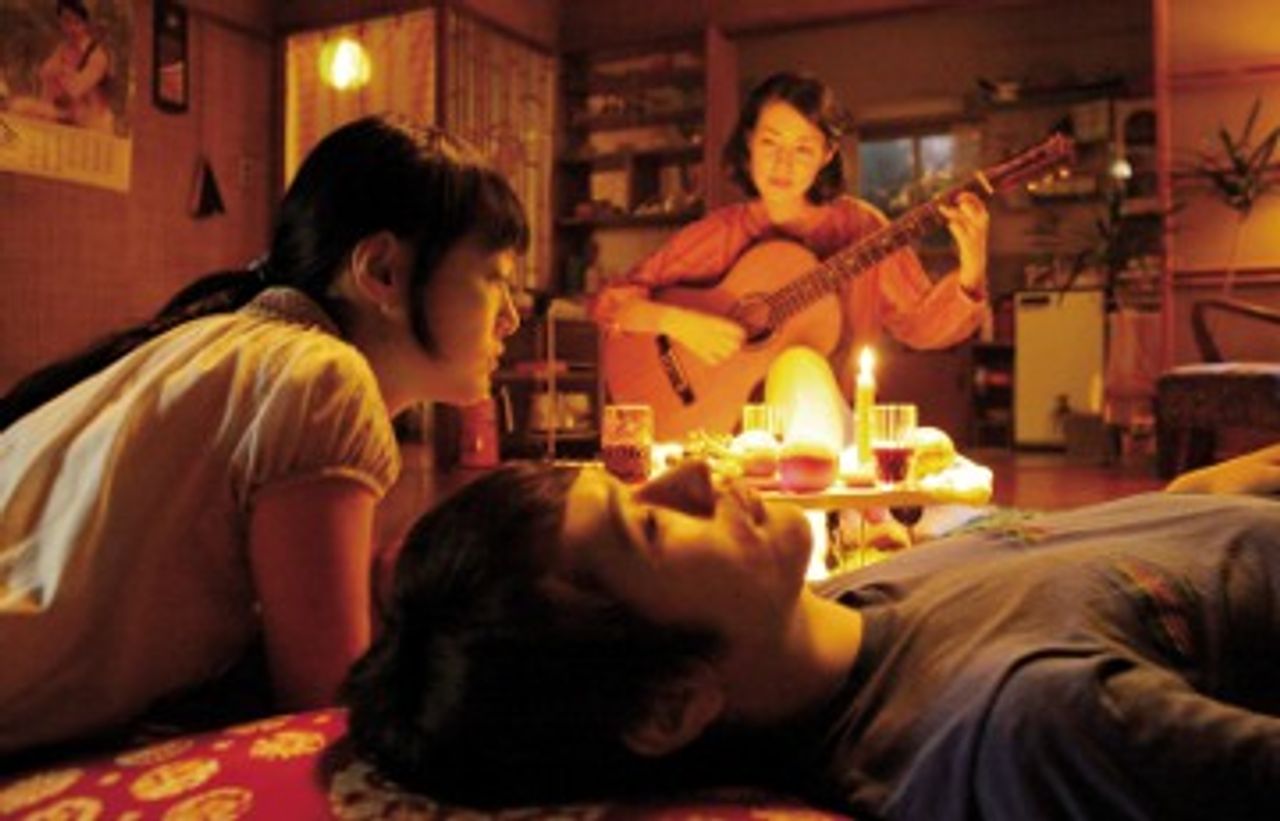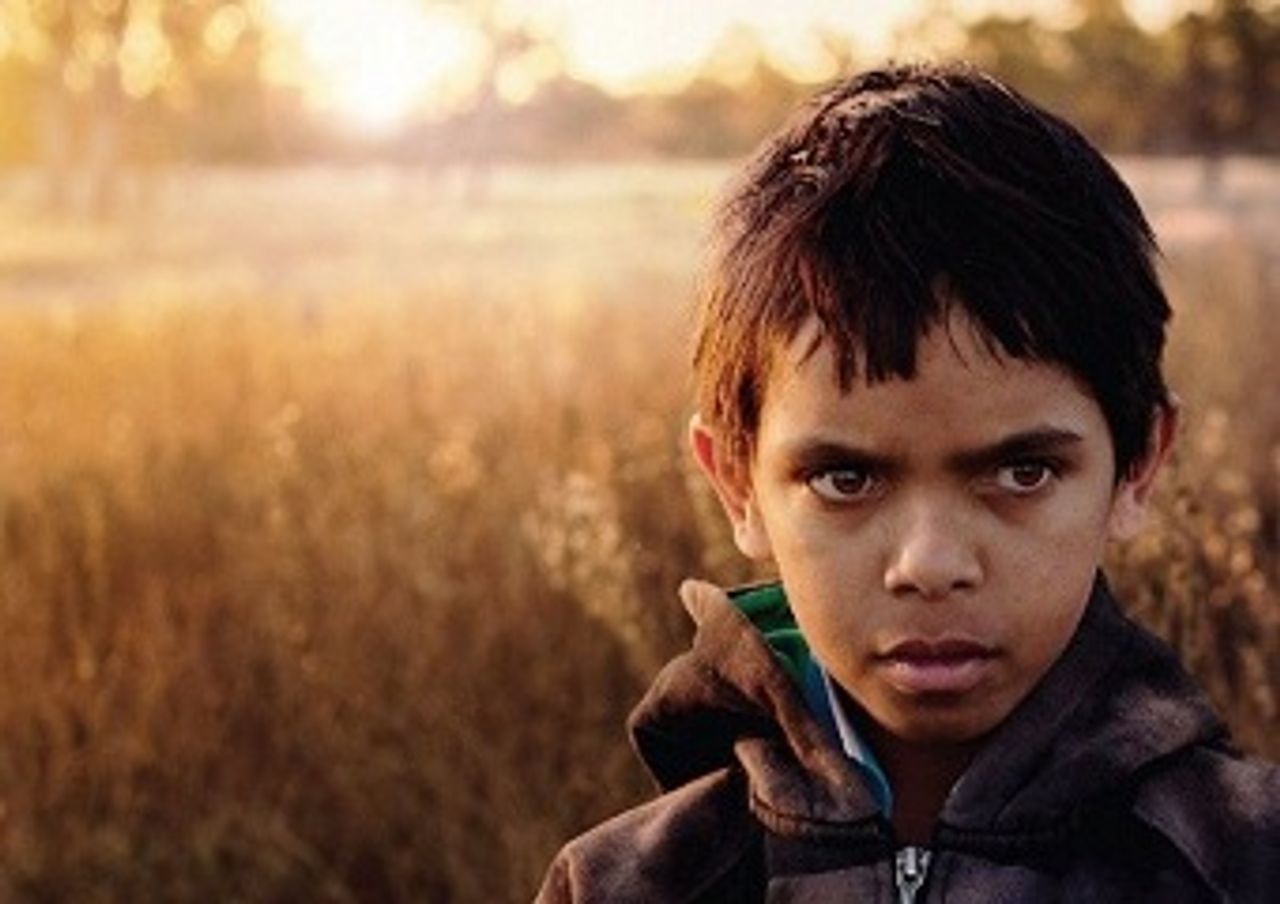This is the second in a series of articles on the recent Sydney Film Festival. [Part 1]
“The sombre theme had to be given a sinister resonance, a tonality of its own, a continued vibration that, I hoped, would hang in the air and dwell on the ear after the last note had been struck”—Joseph Conrad on his novel Heart of Darkness.
***
Festival competition movies varied widely in their range of cinematic styles and artistic sensitivity. Of those that I saw, few achieved Conrad’s intelligence or his artistic maxim—“to hang in the air and dwell on the ear [and eye] after their last note had been struck.”
Amador, written and directed by Fernando León de Aranoa, is a black comedy set in Madrid about Marcela (Magaly Solier), an immigrant worker living with her boyfriend Nelson (Pietro Sibille) on the outskirts of the city. He runs an under-the-table business employing other poor immigrants to sell stolen flowers.
 Amador
Amador
Frustrated with their hand-to-mouth existence, Marcela is about to walk out on Nelson but discovers that she is pregnant and decides to stay. She takes a job providing day care for a bed-ridden old man Amador (Celso Bugallo). While their relationship is prickly at first—she is religious, he despises the church—they gradually become close friends. He sardonically declares that his impending death is to “make way” for her baby.
When Amador quietly passes away some weeks later, Marcela, who desperately needs the day-care job, decides to keep the old man’s death a secret, not just from his neighbours but also from his daughter, who pays the young woman’s wages. Marcela, with the help of a couple of unlikely allies, attempts to maintain this ultimately impossible deception.
De Aranoa, who is probably best known outside Spain for Mondays in the Sun (2002) and Princesas (2005)—the first dealing with unemployment, the second prostitution—is clearly sympathetic toward the plight of workers and the oppressed. As in previous films, his latest feature makes some compassionate and often wry observations, in this case about the position of immigrants in contemporary Spain.
De Aranoa also takes a few swipes at the church and a couple of other targets, but only goes so far. The black humour, which revolves around Marcela’s attempts to cover up Amador’s death, unfortunately becomes laboured, and then implausible, detracting from the movie’s important, although slight, social critique. One of the movie’s appealing elements is Magaly Solier’s performance, which is nuanced. Her exchanges—verbal and visual—with Celso Bugallo as Amador provide the movie’s best moments.
A Russian dystopia
Target, directed by Russian filmmaker Alexander Zeldovich, is a disjointed and rambling morality tale with a pessimistic undertone. Described as a “sci-fi social satire,” the movie is set in 2020 Russia and examines what happens when a group of Russia’s super-rich attempts to purchase eternal youth and happiness.
 Target
TargetThe movie’s central characters—people with wealth, prestige and power—are the Russian Minister of Natural Resources Viktor Chelshchev (Maxim Sukhanov), his wife Zoya (Justine Waddell), her brother Dmitri (Danila Kozlovsky), who is a celebrity television presenter, and Nikolai (Vitaly Kischenko), a high-level customs official.
The four fly to an abandoned astrophysics military installation—the Target—somewhere in the Caucasian Mountains where they pay a large amount of money to spend a night in the facility and soak up its “healthy” radiation. The process is supposed to reverse the ageing process. Viktor, Zoya, Dmitri and Nikolai return to Moscow feeling younger and with heightened energy, alertness and sex drive. Their quest for happiness and eternal youth, of course, fails. Their lives spiral into a series of increasingly debauched and self-destructive events.
Target touches on various issues—political corruption, economic criminality and so on. Dmitri’s glitzy television program is an obvious comment, not just on Russian popular entertainment, but celebrity television programming in general. But these questions are never developed in any meaningful sense. Scenes charting the degeneration of the movie’s principal characters, moreover, are like separate vignettes that never fully cohere during the lengthy 154-minute feature, which eventually exhausts itself.
I spoke briefly with director Alexander Zeldovich in Sydney and asked about his decision to use sci-fi to satirise contemporary Russian life.
“Russia is now a very unfair and uneven society,” he said, “with much economic corruption, inequality and low ideas and immorality. There are lots of problems and many feel it’s no longer possible to continue this way. Several people have said to me that ordinary satire as an artistic device is no longer effective because real life in Russia is much more absurd and grotesque than any writer or artist can imagine.”
Zeldovich said his cinematic inspirations were directors Federico Fellini, Luis Bunuel and other classic European filmmakers from the 1960s and 70s. His latest feature, however, registers only an occasional and faint echo of their work.
I later realised that Target was co-written by Vladimir Sorokin, who also scripted Moscow (2000), Zeldovich’s previous feature. This helped to explain some of the movie’s underlying problems. It attempts to satirise the super-rich with increasingly confronting scenes but tends to blame humanity as a whole. Sorokin has been described in some quarters as “the Quentin Tarantino of post-Soviet literature.” Like Tarantino, his writings are reported to be violent and grotesque, featuring cannibalism, pornography, bestiality and other crude attempts to “shock” his readers.
Japanese teenagers in the mid-60s
Norwegian Wood, directed by Vietnamese director Tran Anh Hung (The Scent of Green Papaya [1993] and Cyclo [1995]) and based on Haruki Murakami’s best-selling Japanese novel of the same name, is a visually arresting work.
 Norwegian Wood
Norwegian WoodOpening in 1967, the movie centres on the life and loves of Toru (Kenichi Matsuyama) and high school friends—Kizuki (Kengo Kora) and his girlfriend Naoko (Rinko Kikuchi). Naoko’s favourite song is the Beatles’ “Norwegian Wood.” Kizuki inexplicably commits suicide, the tragedy impacting on Toru, but even more profoundly on Naoko, who never fully recovers.
Naoko and Toru go on to university and eventually become lovers but the emotionally fragile Naoko develops serious mental health problems. At the same time, Toru becomes romantically involved with another beautiful student, the emotionally stronger and independent Midori (Kiko Mizuhara).
Toru takes no interest in the political radicalisation sweeping through Japanese universities. In fact, this development fails to influence any of the key characters’ lives. There are one or two scenes of protesting students and other visual hints but none of the characters speak about these events. This aspect of Norwegian Wood is frustrating and unreal. Murakami’s novel is apparently contemptuous of the student movement but director Tran Anh Hung simply avoids the issue altogether.
Norwegian Wood is a limited but generally sensitive and intelligent work about the emotional roller coaster of teenage love. Performances by Kikuchi and Matsuyama are good, and the cinematography by Pin Bing Lee is extraordinarily poetic. The movie’s soundtrack by Jonny Greenwood of Radiohead is evocative.
An unflinching social portrait
Toomelah, the third feature by Australian director Ivan Sen is about an Aboriginal community of the same name in north-west New South Wales, on the Queensland state border. The former church mission was established in 1937 by the so-called Aboriginal Protection Board, displacing the local tribes from their traditional land. Hundreds of light skinned and mixed-race children were forcibly removed from their families by government and church authorities during these years in an attempt to “breed out” Australia’s indigenous population.
The low-budget, stripped-down production—Sen wrote, directed, filmed and edited the 106-minute feature—dramatises several weeks in the life of Daniel (Daniel Conners), a 10-year-old Toomelah boy. Sen, who studied photography prior to becoming a filmmaker, has a sharp eye, and this is apparent throughout his harrowing portrait of this desperately poor community (see interview).
 Toomelah
ToomelahDaniel drops out of school and becomes friends with the much older Linden (Christopher Edwards), a local drug dealer, and his gang. The young boy stubbornly refuses to resume his schooling as demanded by his separated parents, who have their own demons—his mother is a drug user; his father an alcoholic.
With no prospect of work—no one in the community has a job—Daniel and the group, contemptuously referred to as “plastic gangsters” by other members of the community, go fishing, play video games and tag along with Linden as he dispenses marijuana to his local clients. A turf war erupts when Bruce (Dean Daley Jones), another dealer, returns to the community after a being released from prison. An inevitable and violent clash with Bruce shocks the young boy to the core.
The movie concludes with Daniel drifting back to school. After studying a school display of archival photos of the mission community and pictures of local Aborigines in chains, he returns to his class where he begins learning the local Aboriginal language.
Toomelah’s ‘glimmer of hope’ ending, which suggests that Daniel can rebuild his life by simply reconnecting with indigenous cultural traditions, is unconvincing and unnecessary. In fact, it weakens this blunt presentation of the social disaster facing Aboriginal people in hundreds of similar communities across Australia. These horrendous social problems are the result of decades of government repression and institutionalised neglect. They will not be resolved through individuals “taking personal responsibility” as claimed ad nausea by federal and state governments, Labor and Liberal alike.
Two decades ago, Toomelah had raw sewage overflowing into the settlement’s streets; one tap for its 500 residents, with water available for 15 minutes twice a day; grossly over-crowded housing, with up to 30 people in each home; and rampant e-coli infections and other serious health problems. A human rights commissioner investigating the settlement declared that it was “beyond belief that Australian citizens could be asked to live in those circumstances.”
Sen’s movie reveals, once again, that little has changed.
To be continued
